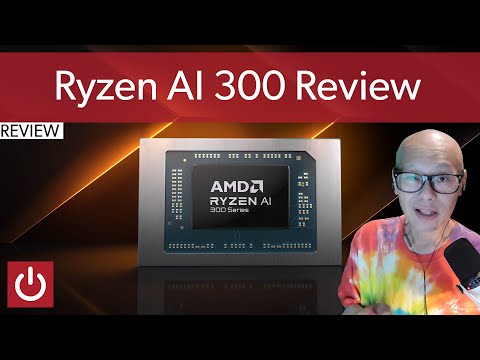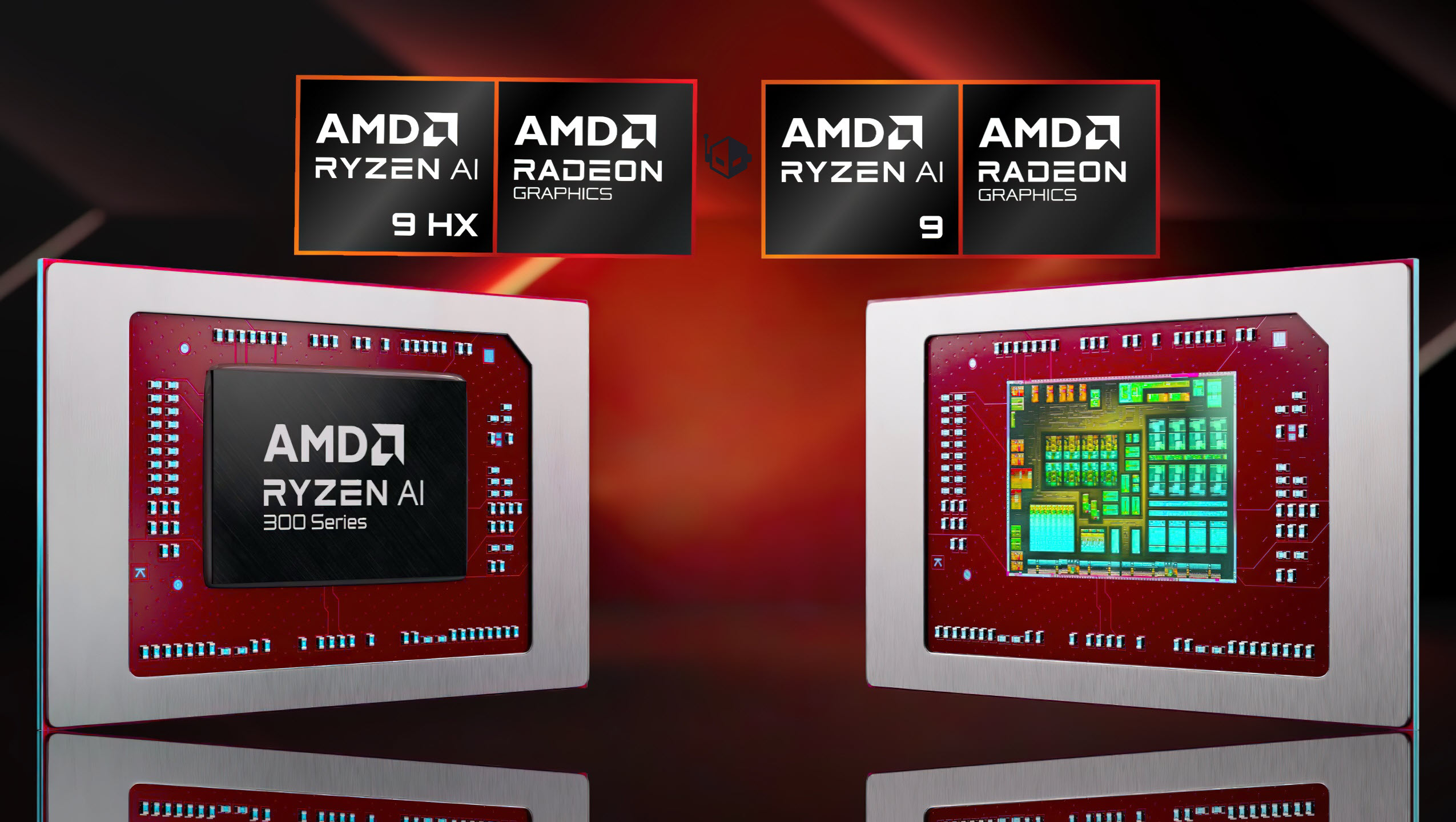AMD has officially launched its first Ryzen AI 300 “Strix” APU laptops, which combine Zen 5 CPU, RDNA 3.5 GPU and XDNA 2 NPU cores.
AMD’s first Copilit+ ready APUs are here! Meet the Ryzen AI 300 “Strix” family for laptops, equipped with up to 12 Zen 5 cores, 16 RDNA 3.5 GPU cores and 55 TOPS XDNA 2 NPU
The AI computing ecosystem is evolving every second as everyone tries to get a piece of the pie. AMD was essentially the first chipmaker to introduce an “AI PC” SOC with its Phoenix APU family in 2023, and this was followed by the launch of the much-improved Hawk Point series, which offered higher NPU TOPS.
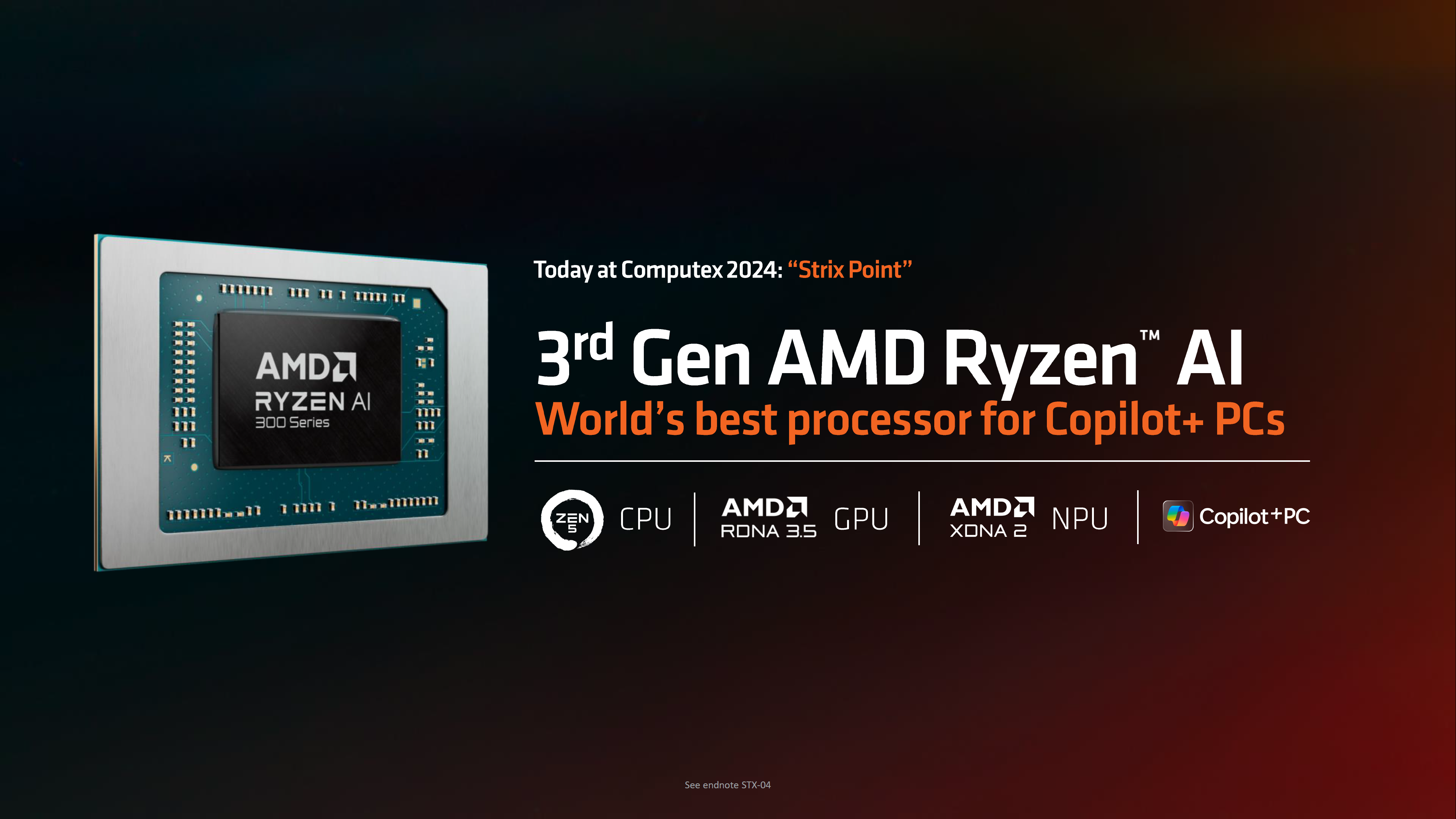
With the arrival of the Microsoft Copilot+ PC platform, AMD goes even bigger and introduces its Ryzen AI 300 “Strix” platform, which combines several aspects to meet the demand for these transformative next-generation AI experiences in the consumer world. For AMD, the goals are very clear, to offer increased AI performance, offering rich new GenAI & Copilot+ experiences, all locally on the PC.

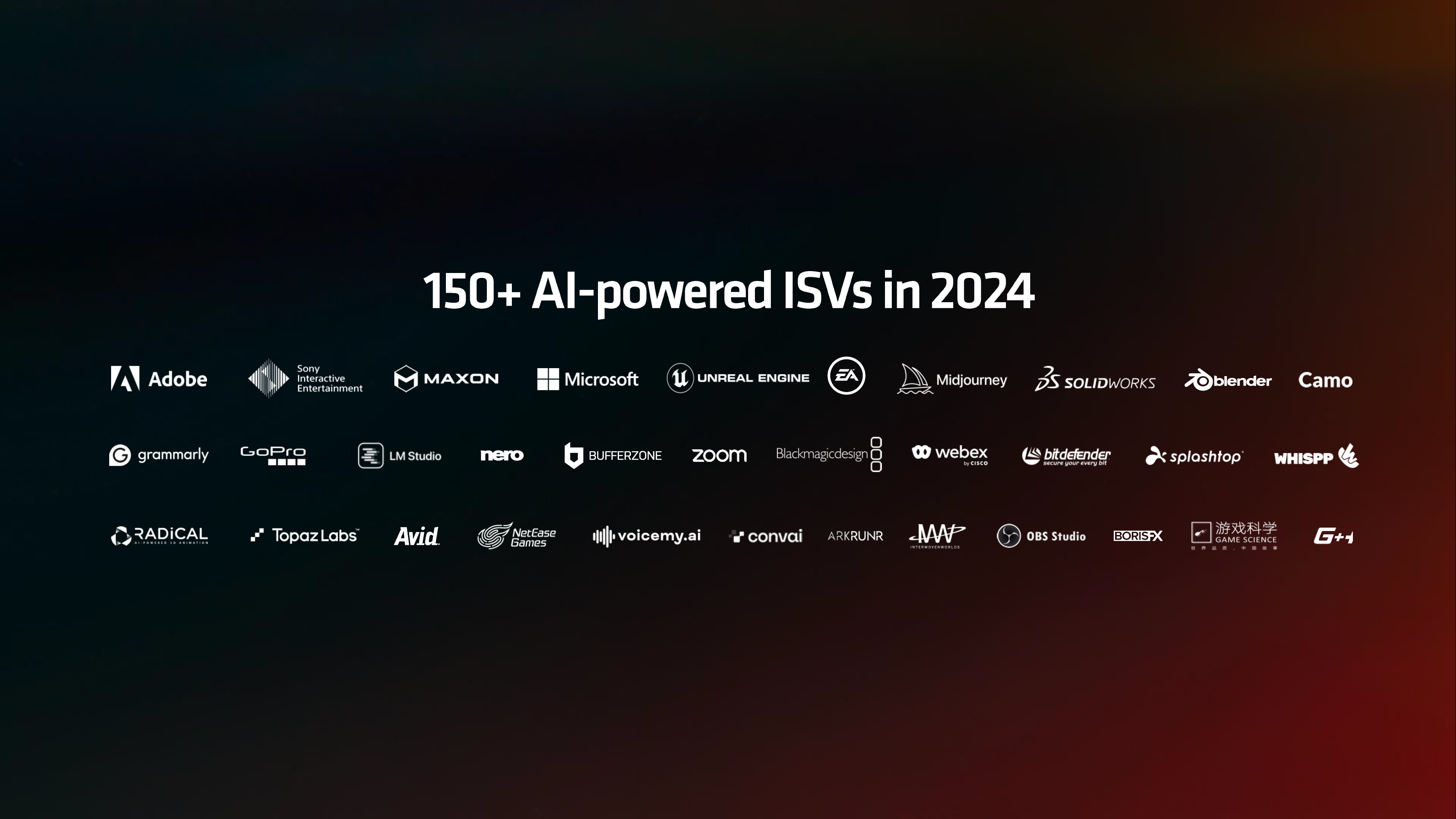
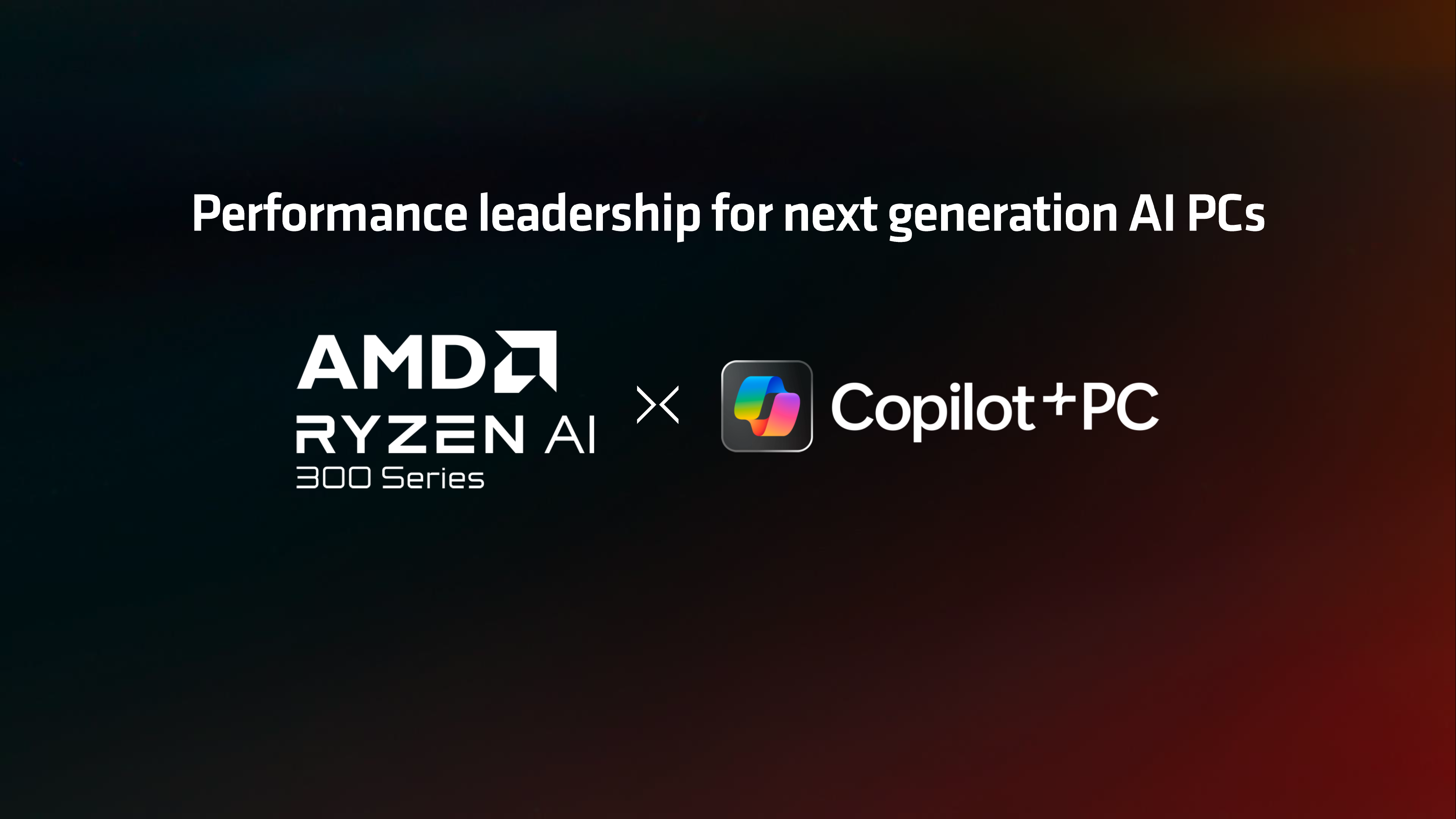
So, today AMD is finally launching its new Ryzen AI 300 “Strix” APU family for laptops, and the name might confuse you a bit, but it’s a fresh new approach to the new beginning of the AI PC ecosystem. AMD’s Ryzen naming scheme over the last two generations looks like this:
- Ryzen 7040 (Phoenix) -> Ryzen 8040 (Hawk) -> Ryzen AI 300 (Strix)
The launch of the 300 series marks the 3rd generation of AI PC APUs, with Phoenix being the first and Hawk being the second. It’s also mentioned that with Ryzen AI, AMD is unifying its portfolio and no longer relying on a fixed TDP for a select SKU. So they no longer have to use the U/H/HS series branding. Instead, AMD gives OEMs the flexibility to adjust these APUs to their requirements with TDPs from 15W and up to 54W. The “HX” designation will mark the cream of the SKU, while the non-HX SKUs will be energy-conservative designs.
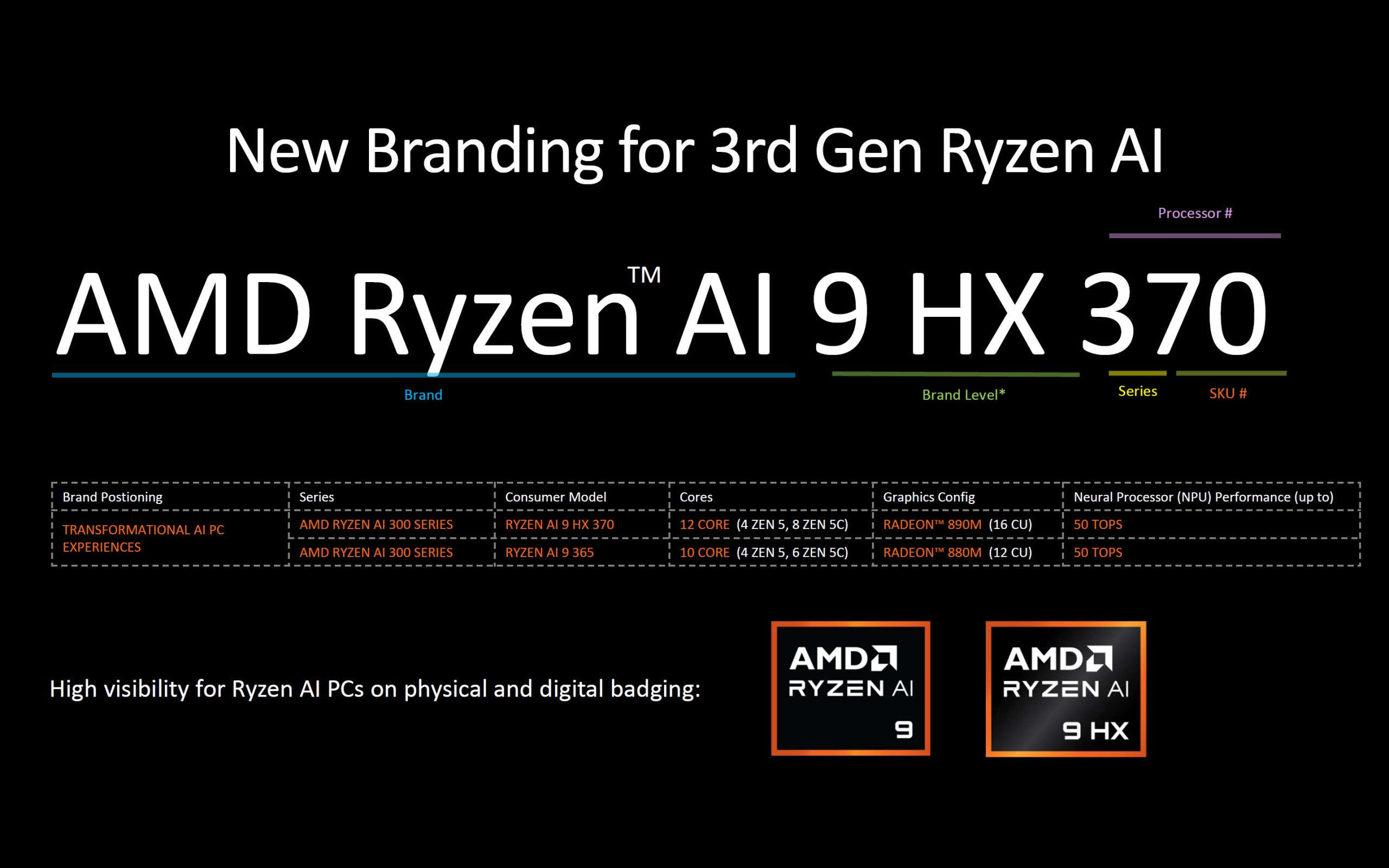
As mentioned above, the AMD Ryzen AI 300 “Strix” APU combines three main core technologies that include:
- Zen 5 (CPU Cores)
- RDNA 3.5 (GPU cores)
- XDNA 2 (NPU cores)
AMD Zen 5 is a brand new architecture (full deep dive here) that will also be introduced in several other processor families, such as the Ryzen 9000 “Granite Ridge” desktop processors for high-end PCs and the 5th generation EPYC “Turin” CPUs for data centers.
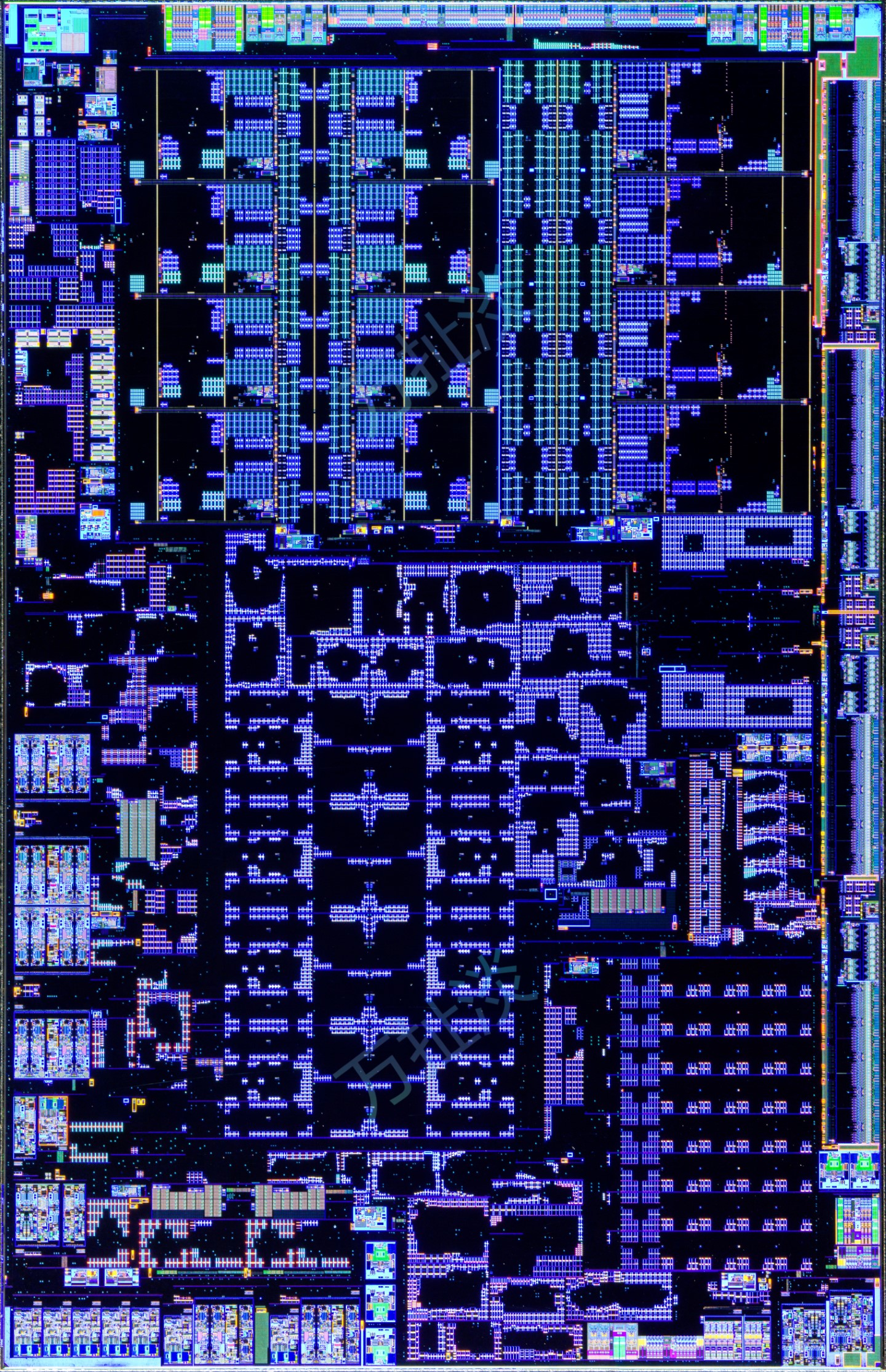
AMD Strix APUs are still based on a single, monolithic die based on the TSMC 4nm process node and come with up to 12 cores and 24 threads that use both Zen 5 and Zen 5C cores. This approach is done to achieve maximum efficiency with the Zen 5C cores and maximum performance with the Zen 5 cores, as the former tend to run at slightly lower clock speeds while keeping the same ISA. The Strix APU die measures 12.06×18.71mm or close to 225mm2.

The AMD RDNA 3.5 iGPU for the Ryzen AI “Strix” APU is now optimized and includes certain architectural updates along with support for a higher number of compute units that add up to 16 for the flagship.
Some of the improvements made in RDNA 3.5 over the RDNA 3 architecture were optimized performance/watt, optimized performance/bit and better power management for longer battery life. AMD RDNA 3.5 GPUs have:
- 2x Texture Sampler Rate: A subset of the most common texture sampling operations are now double-speed for common in-game texture operations.
- 2x Interpolation and comparison rates: Most of the rich vector ISA for interpolation and comparison is now twice the size of regular shader operations.
- Improved memory management: Improvements in primitive batch processing to reduce memory access, better compression techniques, load reduction and optimized LPDDR5 access.

Then we have the highlight of the show, the XDNA 2 NPU, offering up to 55 TOPS alone and that’s big. The NPU is faster than the one featured on the Snapdragon X CPU platform and faster than the Intel Lunar Lake platform, which AMD expects to reach around 45 TOPS.
AMD Ryzen AI 300 “Strix” APU SKUs and Specs
Okay, so with the main IPs out of the way, we can talk about SKUs. So far, AMD is only introducing two SKUs within its Ryzen AI 300 “Strix” family. Ryzen AI 9 HX 370 and Ryzen AI 9 365.
Starting with the Ryzen AI 9 HX 370, we’re looking at a 12-core, 24-thread chip that features a quad Zen 5 and eight Zen 5C configuration. This chip runs at up to 5.1GHz boost clocks, offers 36MB cache (24MB L3 + 12MB L2) and a Radeon 890M iGPU with 16 compute units or 1024 cores. So compared to the previous flagship, the Ryzen 9 8945HS, you get 50% more cores/threads, 33.3% more Compute Units and 3.12x the NPU performance, which is a great generation-over-generation gain.

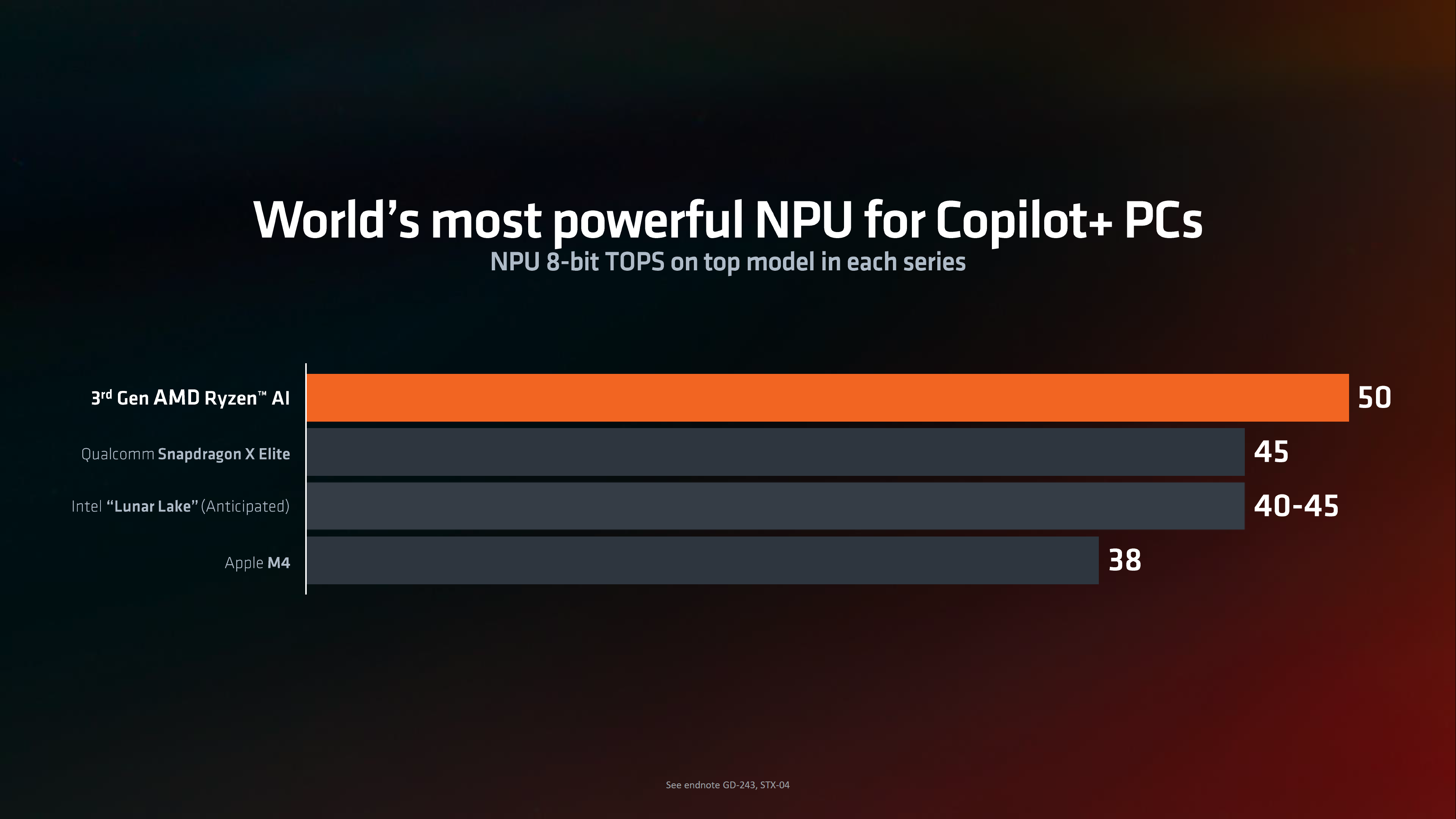
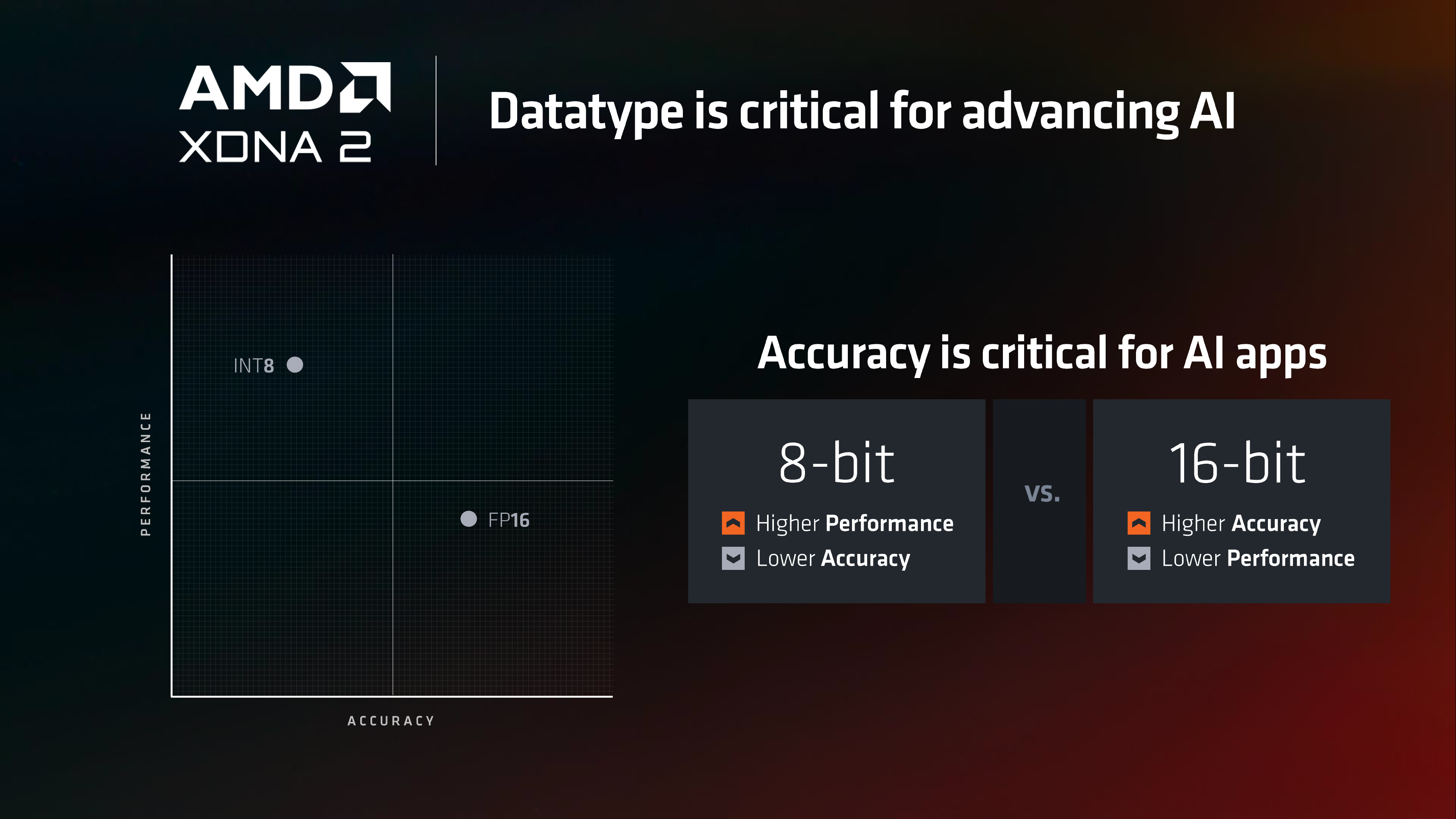
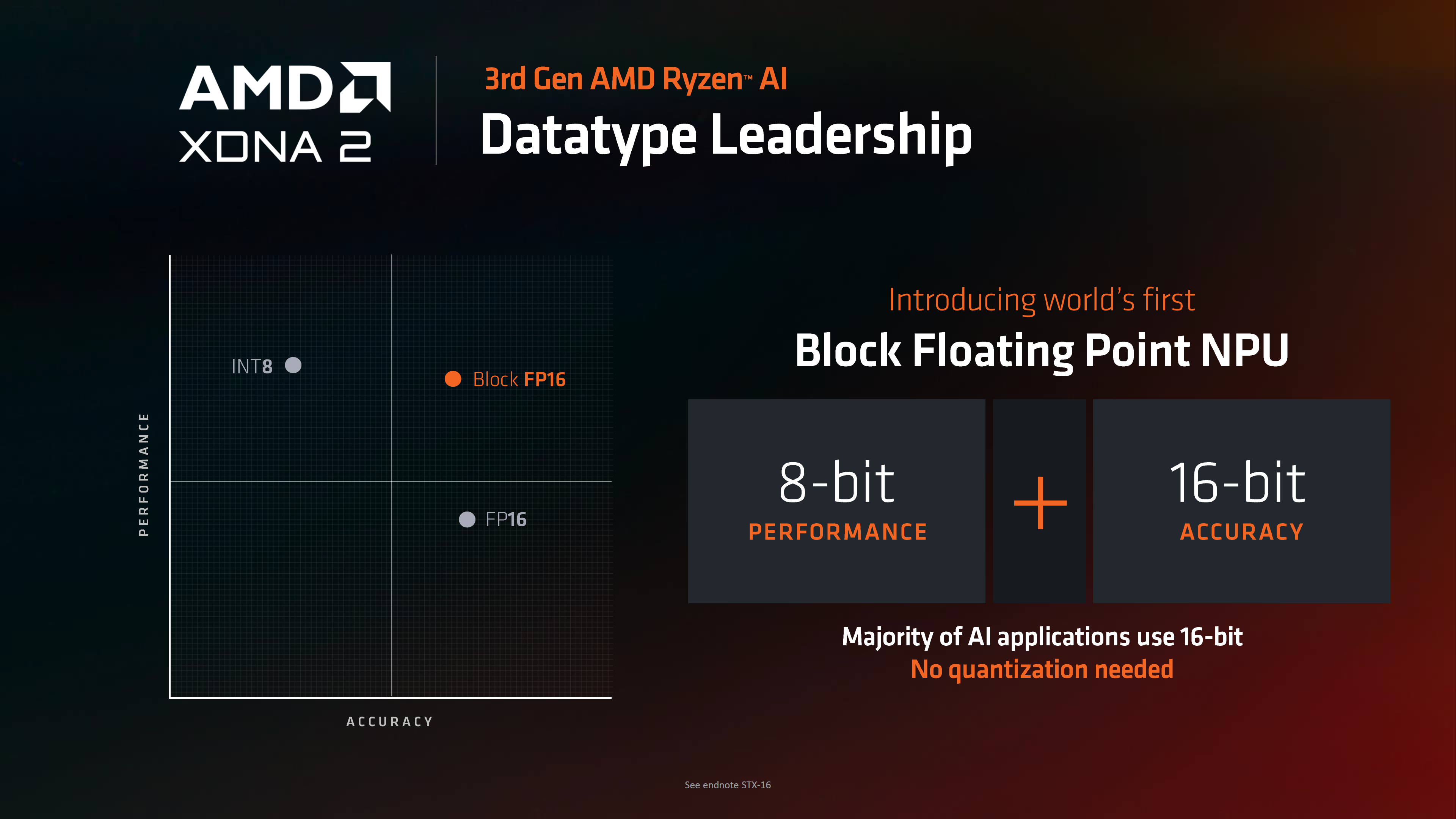


AMD says the XDNA 2 NPU features improved AI chips that enable 2x more multitasking capabilities for increased computing and are also 2x more efficient with specific improvements for GenAI workloads. This results in XDNA 2 NPUs being up to 5x faster than the last generation offerings in LLM. There’s an even higher-end chip, the Ryzen AI 9 HX 375, which comes with 55 TOPS of NPU AI performance and seems to be limited to only a few laptops like the HP OmniBook Ultra.
The second chip in the range is the AMD Ryzen AI 9 365, which is a 10-core and 20-thread part with a clock frequency of up to 5.0 GHz, 34 MB of cache memory and a Radeon 880M iGPU with a total of 12 computing units or 768 cores. This chip comes with four Zen 5 and six Zen 5C cores. Both Strix APUs feature the same level of NPU capabilities with their XDNA 2 hardware delivering up to 55 TOPS AI performance.
AMD Ryzen AI “HX” APU:
| Processor name | Architecture | Cores / Threads | Clock Speeds (Max) | Cash (Total) | AI capabilities | iGPU | TDP |
|---|---|---|---|---|---|---|---|
| Ryzen AI 9 HX 375 | Zen 5 / Zen 5C | 12/24 | 2.0 / 5.1 GHz | 36 MB / 24 MB L3 | 85 AI TOPS (55 TOPS NPU) | Radeon 890M (16 CU @ 2.9 GHz) | 28W (cTDP 15-54W) |
| Ryzen AI 9 HX 370 | Zen 5 / Zen 5C | 12/24 | 2.0 / 5.1 GHz | 36 MB / 24 MB L3 | 80 AI TOPS (50 TOPS NPU) | Radeon 890M (16 CU @ 2.9 GHz) | 28W (cTDP 15-54W) |
| Ryzen AI 9 HX PRO 370 | Zen 5 / Zen 5C | 12/24 | 2.0 / 5.1 GHz | 36 MB / 24 MB L3 | 80 AI TOPS (50 TOPS NPU) | Radeon 890M (16 CU @ 2.9 GHz) | 28W (cTDP 15-54W) |
| Ryzen AI 7 PRO 360 | Zen 5 / Zen 5C | 12/24? | 2.0 / 5.0 GHz | 36 MB / 24 MB L3 | 80 AI TOPS (50 TOPS NPU) | TBD | 28W (cTDP 15-54W) |
| Ryzen AI 7 365 | Zen 5 / Zen 5C | 10/20 | 2.0 / 5.0 GHz | 30 MB / 20 MB L3 | 80 AI TOPS (50 TOPS NPU) | Radeon 880M (12 CU @ 2.9 GHz) | 28W (cTDP 15-54W) |
| Ryzen AI 7 HX 350? | Zen 5 / Zen 5C | 8/16 | TBD | 24 MB / 16 MB L3 | 80 AI TOPS (50 TOPS NPU) | 12 RDNA 3+ CU? | 28W (cTDP 15-54W) |
| Ryzen A 5 HX 330? | Zen 5 / Zen 5C | 6/12 | TBD | 20 MB / 12 MB L3 | 80 AI TOPS (50 TOPS NPU) | 8 RDNA 3+ CU? | 28W (cTDP 15-54W) |
When it comes to laptops, the following are all the latest designs you can get right now:

With the world’s fastest NPU delivering 55 AI TOPS, AMD can really shake things up in the AI PC segment with its Ryzen AI 300 chip series. We can expect more laptops by launch and better availability by the holiday season 2024
